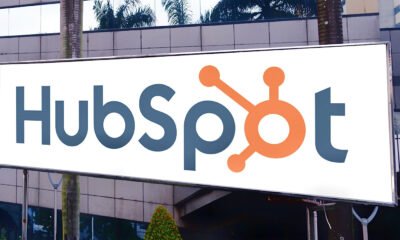EMAIL MARKETING
Top 5 Data Trends Powering Digital Marketing Growth in 2021

 Last year saw an explosion of martech tools, increased integrations, and AI automations. It’s clear digital connectivity has skyrocketed, with massive amounts of data from multiple sources seamlessly moving from one platform to another. Studies from McKinsey have said that in 2020, digital transformation vaulted five years forward in about eight weeks’ time.
Last year saw an explosion of martech tools, increased integrations, and AI automations. It’s clear digital connectivity has skyrocketed, with massive amounts of data from multiple sources seamlessly moving from one platform to another. Studies from McKinsey have said that in 2020, digital transformation vaulted five years forward in about eight weeks’ time.
While most of us faced new challenges over the past year, technology has actually made it possible to execute more efficient and accurate marketing campaigns – if you have the right information. Now more than ever, data is not just a helpful tool, it’s a necessity to reach the right customers. From my perspective as a long-time data provider, here are five of the top emerging data trends and how you can use them to fuel business growth this year.
- Foundational Contact Data to Fuel Acquisition
The amount and granular level of data being mined and analyzed for digital marketing these days is staggering. Yet oftentimes the most fundamental contact data – an email address – can be one of the hardest pieces to fill. Ask almost any digital marketer and they’ll tell you that getting the prospect’s email address continues to be the holy grail.
Many marketers – even those with significant databases – are finding they need data from multiple sources to execute strong acquisition campaigns. Especially as B2B data regularly decays up to 70% per year and data decay soared this past year in the changing economy. A quality third-party data provider can fill in the missing pieces and fill out your contact list with accurate data. A keyword to remember is quality. A “discount” data provider may sound enticing by offering a large quantity of contacts at a low price, but it’s not worth the effort when your bounces are through the roof. The same applies to using old or outdated lists, sending campaigns with bad data is a waste of time and money.
- Matching Business and Personal Contact Data to Reach Prospects Anywhere
Digital marketers have faced increased challenges in reaching prospects this past year. Even with accurate foundational contact data, many decision-makers are working from home on their personal devices, as well as using their personal email accounts for work. The line between business and personal is blurry at best, and nonexistent for some.
To address this change, it’s best to use contact data that combines both personal and business characteristics for each contact. Third-party data can fill-in the missing pieces and match a contact’s personal records to their professional one for a more complete profile. This is especially important with the millennial and Gen Z age groups, as they prefer to do their own research before making a purchase.
- Using Identity Graphs for a More Holistic Customer View
Your audience operates across various channels and devices, so effective sales and marketing campaigns need to meet them where they are. One of the most innovative data strategies we’re seeing is the use of identity graphs, which connect data from multiple sources and map it to anonymized customer profiles. The graph includes identifiers for real individual consumers and includes firmographic data. Marketers can use the identity graph to build custom audiences with offline and online prospect attributes, then take the anonymized IDs from the graph to a demand-side platform. This leads to a deeper and more complete view to better identify the right prospects for offers and engage more effectively with them.
- Identifying Buyer Interest Through Daily Intent Data Feeds
As many B2B marketers have turned to an account-based marketing (ABM) approach to finding new accounts, intent monitoring has risen as a necessity in finding buyers who show the most promise of becoming customers. Intent data insights are obtained when buyers’ online activities are anonymously monitored, captured and analyzed based on designated actions such as website visits, content downloads, product reviews or registration for webinars. Typically, these are generated as weekly updates with lists of new prospects, but new options are emerging for an ongoing feed of prospect intent data delivered directly to marketers or agencies. This gives marketers the opportunity to “jump” on a prospects interest with targeted outreach or acquisition campaigns at the right time.
- Aggregating Data with Customer Data Platforms (CDPs)
With the many new data tools and options, marketers need a way to connect and unify their own customer data from multiple sources. Customer data platforms (CDP) meet that need by connecting fragmented data into a central location. While CDPs have been around for several years, they’ve become a must-have platform this past year. I expect the demand will increase even more, as managing customer data and getting value from that data is critical to business success.
From the demise of third-party cookies to the social and economic impacts of the pandemic, and even greater digitization, there have been massive changes over the past year. Digital marketers are learning that to keep up in this economy, they have to adapt fast. But with the right data and the right tools, pivoting has become easier. While brands can level up their ability to target and reach in-market prospects, the upside for buyers is also clear: businesses are engaging with them with the right message, in the right channel, and at a time when they are ready to buy. There’s no doubt we’ve reached a point where digital marketers have the power to utilize data to its full potential.
Author:
Paula Chiocchi, CEO and founder of Outward Media, Inc. (OMI), is an award-winning marketing industry veteran whose mission is to help businesses realize their full potential by effectively reaching their target audiences and converting more prospects into customers. OMI’s high-quality business contact data is used by Fortune 1000 firms… View full profile ›









![Holistic Marketing Strategies That Drive Revenue [SaaS Case Study] Holistic Marketing Strategies That Drive Revenue [SaaS Case Study]](https://articles.entireweb.com/wp-content/uploads/2024/09/Holistic-Marketing-Strategies-That-Drive-Revenue-SaaS-Case-Study-400x240.png)
![Holistic Marketing Strategies That Drive Revenue [SaaS Case Study] Holistic Marketing Strategies That Drive Revenue [SaaS Case Study]](https://articles.entireweb.com/wp-content/uploads/2024/09/Holistic-Marketing-Strategies-That-Drive-Revenue-SaaS-Case-Study-80x80.png)

